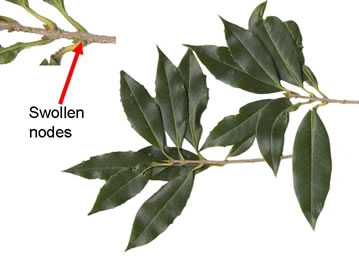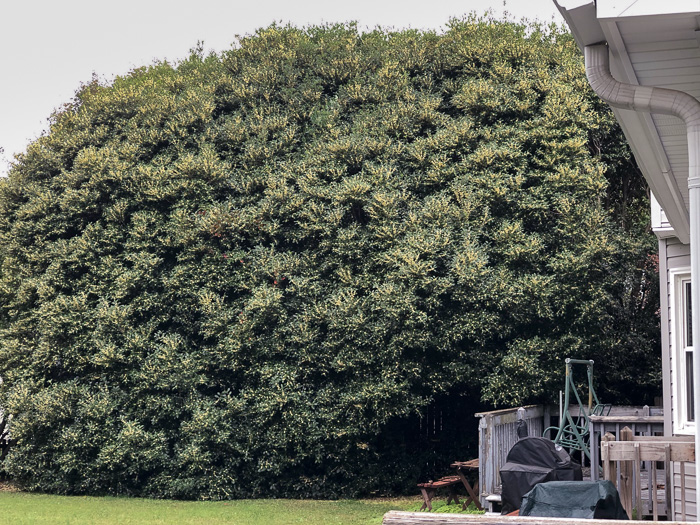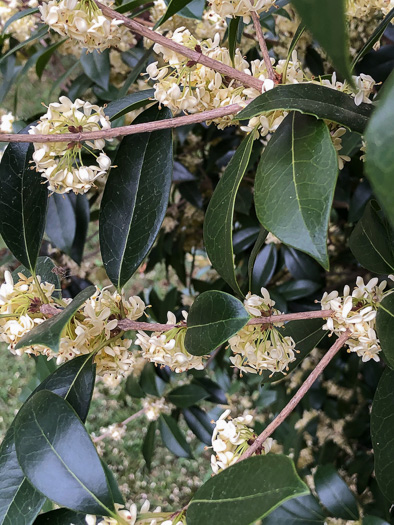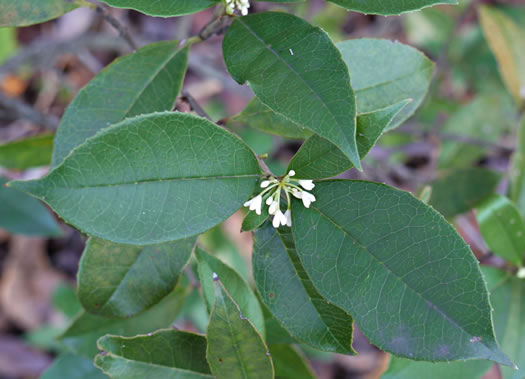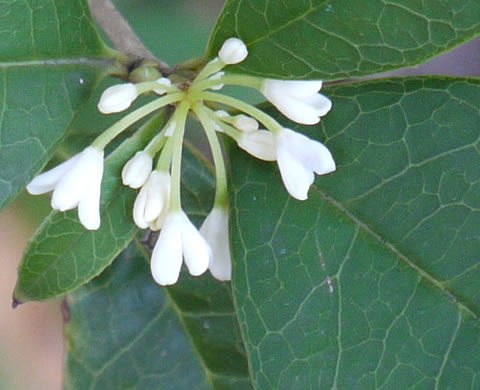Spermatophytes (seed plants): Angiosperms (flowering plants): Eudicots: Core Eudicots: Asterids: Lamiids: Lamiales
Dig deeper at SERNEC, a consortium of southeastern herbaria.
Read about Cartrema and Osmanthus from Alan Weakley and the Southern Appalachian Botanical Society.
PLANTS NATIONAL DATABASE:
Osmanthus fragrans
FAMILY
Oleaceae
COMMON NAME:
Fragrant Tea Olive
To see larger pictures, click or hover over the thumbnails.
Fran Durovchic Villa fdv_image0
October Greenville County SC
in cultivation
In coastal areas it reaches 20-30' high, reduced in size further inland, per Manual of Woody Landscape Plants (Dirr, 1975+).
Fran Durovchic Villa fdv_image2
October Greenville County SC
in cultivation
The small white flowers are quite fragrant, per Manual of Woody Landscape Plants (Dirr, 1975+).
Fran Durovchic Villa fdv_image3
October Greenville County SC
in cultivation
Lvs oblong-lanceolate to elliptic, 2-4(5)" long, finely dentate or entire, per Manual of Woody Landscape Plants (Dirr, 1975+).
JK Marlow jkm101120_292b
November Greenville County SC
Many-flowered cymes fascicled in leaf axils. Pedicel 4-10mm. Calyx ~ 1mm, per Flora of China.
If a search such as "Carex leptalea var. leptalea" doesn't deliver the results you want, try "Carex leptalea".
Or, to minimize chances of a misspelling, try just "Carex le".
Less is more: If "pencil flower" doesn't deliver the results you want, try "pencil".

